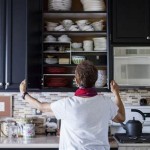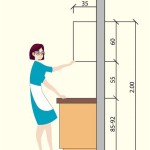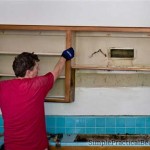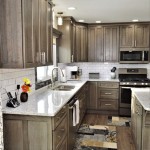Priming Kitchen Cabinets Before Painting: A Complete Guide
Priming kitchen cabinets is a crucial step that ensures a professional-looking, long-lasting paint job. By adhering to best practices and using the right materials, you can achieve a flawless finish that will enhance the aesthetics of your kitchen.
Importance of Priming
Primer serves several essential purposes, including:
- It seals porous surfaces, preventing paint from absorbing unevenly.
- It provides a uniform base color, eliminating any imperfections or color variations in the cabinets.
- It enhances adhesion, ensuring the paint bonds firmly to the surface.
Choosing the Right Primer
The type of primer you choose will depend on the condition and material of your kitchen cabinets. Here are some general guidelines:
- New cabinets: Use a universal primer, which adheres well to various surfaces.
- Previously painted cabinets: Select a bonding primer, which is specially formulated to bond to existing paint.
- Cabinets with stains or imperfections: Apply a stain-blocking primer to prevent discoloration from seeping through the paint.
Preparing the Cabinet Surfaces
Before priming, it's essential to prepare the cabinet surfaces thoroughly:
- Remove any hardware, such as knobs, handles, or hinges.
- Clean the cabinets with a degreaser or TSP (trisodium phosphate) to remove dirt, grease, and wax.
- Sand the surfaces lightly with fine-grit sandpaper to smooth out imperfections and improve adhesion.
- Wipe away any dust or debris with a tack cloth.
Applying the Primer
Follow these steps to apply the primer correctly:
- Use a brush or roller to apply a thin, even coat of primer to the cabinets.
- Allow the primer to dry completely before applying a second coat.
- Apply light sanding between coats to ensure smoothness.
Drying and Inspection
After applying the primer, allow it to dry thoroughly. The drying time will vary depending on the primer used and the temperature and humidity. Once dry, inspect the cabinets for any missed spots or imperfections and touch up as necessary.
Benefits of Priming
Properly primed kitchen cabinets offer numerous benefits:
- Improved paint adhesion: Primer creates a strong bond between the paint and the cabinet surface.
- Flawless finish: Primer smooths out imperfections, resulting in a professional-looking paint job.
- Increased durability: Primer protects cabinets from moisture, wear, and scratches.
By adhering to these essential aspects of priming kitchen cabinets, you can ensure a successful painting project that will enhance the visual appeal and longevity of your cabinetry.

How To Paint Kitchen Cabinets A Step By Guide Confessions Of Serial Do It Yourselfer

How To Prime Cabinets For A Smooth Finish The Turquoise Home

Refinish Kitchen Cabinets With Kilz Restoration Primer

How To Paint Kitchen Cabinets A Step By Guide Confessions Of Serial Do It Yourselfer

How To Paint Kitchen Cabinets A Step By Guide Confessions Of Serial Do It Yourselfer
How Many Coats Of Primer Do I Need To Paint Kitchen Cabinets Quora

How To Prime Cabinets For A Smooth Finish The Turquoise Home

How To Clean Prep Wood Kitchen Cabinets Before Painting Do Dodson Designs

A Guide To Painting Kitchen Cabinets Norton Abrasives

How To Paint Fake Wood Kitchen Cabinets Simple Made Pretty 2024
Related Posts








